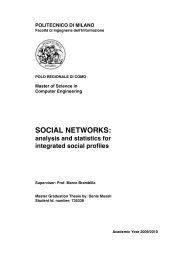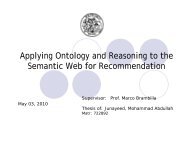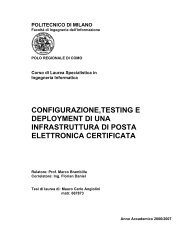Thesis full text (PDF) - Politecnico di Milano
Thesis full text (PDF) - Politecnico di Milano
Thesis full text (PDF) - Politecnico di Milano
Create successful ePaper yourself
Turn your PDF publications into a flip-book with our unique Google optimized e-Paper software.
1. Introduction<br />
At present the Web applications involve more in terms of explicitly declared semantics of<br />
published and managed data, because of increasing demands for information integration and<br />
exploitation. Typically, the con<strong>text</strong>, and the content of the Web applications assembled from<br />
several heterogeneous sources, on which no assumption of common terminology can be done.<br />
Recent evolutions of Web applications involve abstruse demands in the explicitly declared<br />
meaning of managed data in terms of real-world entities. Data and its non-ambiguous<br />
interpretation must be shared between involved parties. In this setting, applications do need to<br />
know the meaning of the shared data that we reference in the rest of the article as data semantics.<br />
Once such knowledge is formalized and explicitly integrated into the system, it may be<br />
interpreted and managed with application-dependent means for delivering the system services<br />
and products.<br />
The aforementioned limitations can be overcome by representing Web data semantics using the<br />
UML class <strong>di</strong>agrams. We are using an existing framework [1] to serve this purpose which can<br />
check the consistency of a knowledge base represented by a UML class <strong>di</strong>agram, and can make<br />
inferences upon the UML objects derive new associations between Web data. We have<br />
developed a model-driven knowledge-intensive web application with recommendation feature.<br />
1.1 Motivation<br />
Tra<strong>di</strong>tional Web applications aim at offering information to users in terms of contents that can be<br />
browsed, searched, and mo<strong>di</strong>fied through navigational links. But unfortunately, the<br />
implementation techniques that are currently used for Web applications suffer of several<br />
impuissances:<br />
• Semantics of data and navigation is conveyed only within design documents that are not<br />
usually available along with the Web data at runtime, thus making it impossible to grasp<br />
the meaning of the implemented data structures.<br />
• Tra<strong>di</strong>tional Web applications are not rich enough to cover commonly required aspects of<br />
data semantics representation, like generalization hierarchies with overlapping<br />
5


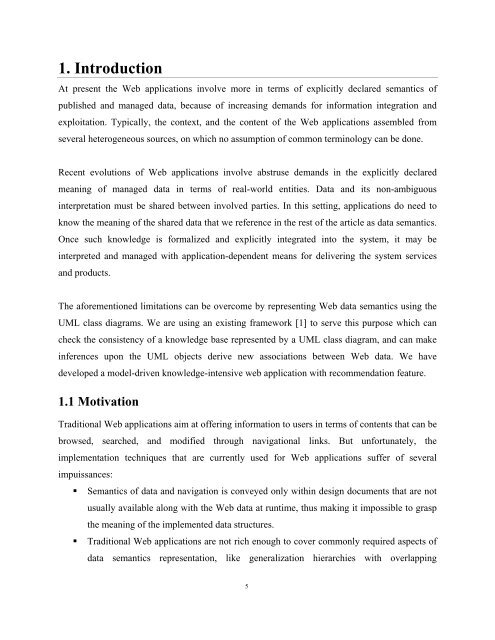
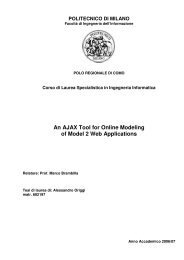

![Full text preview of the chapter [PDF] - Politecnico di Milano](https://img.yumpu.com/44021924/1/180x260/full-text-preview-of-the-chapter-pdf-politecnico-di-milano.jpg?quality=85)
